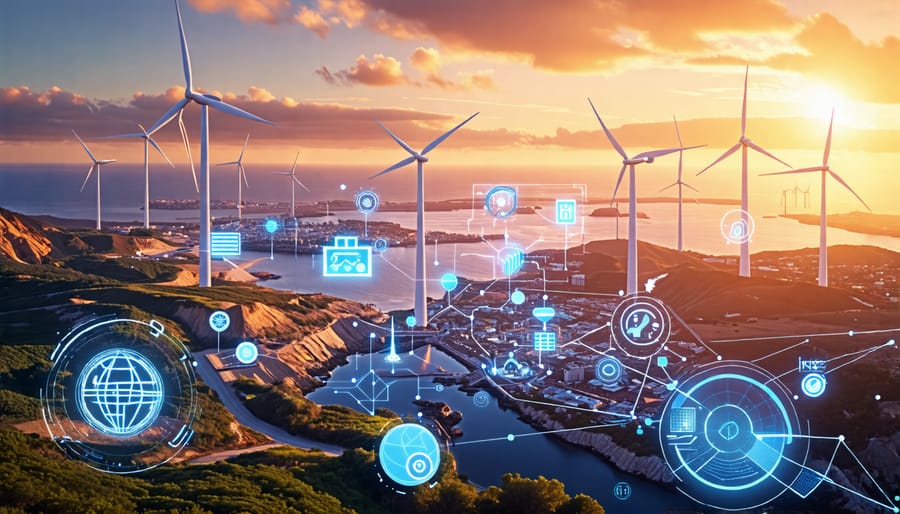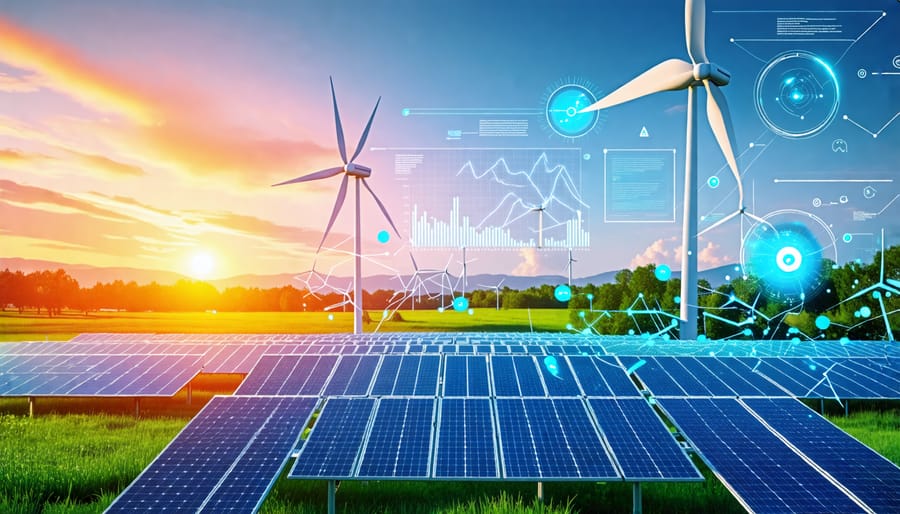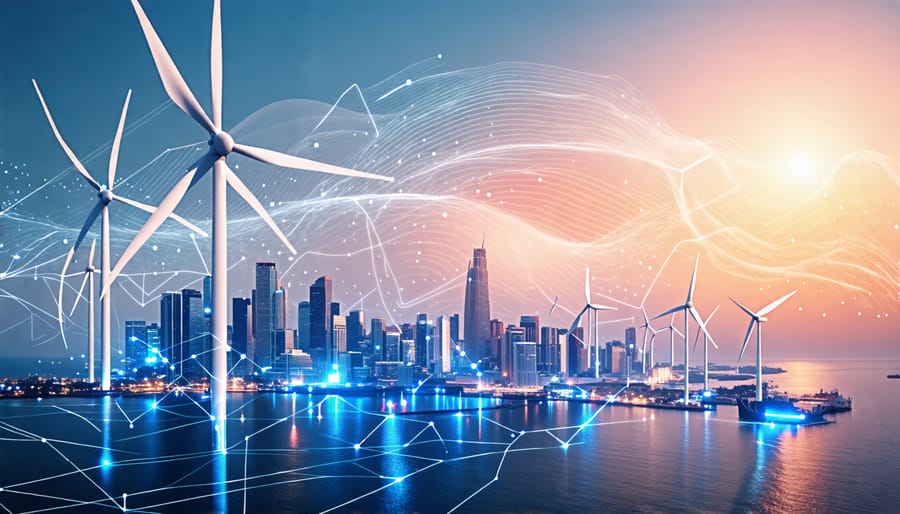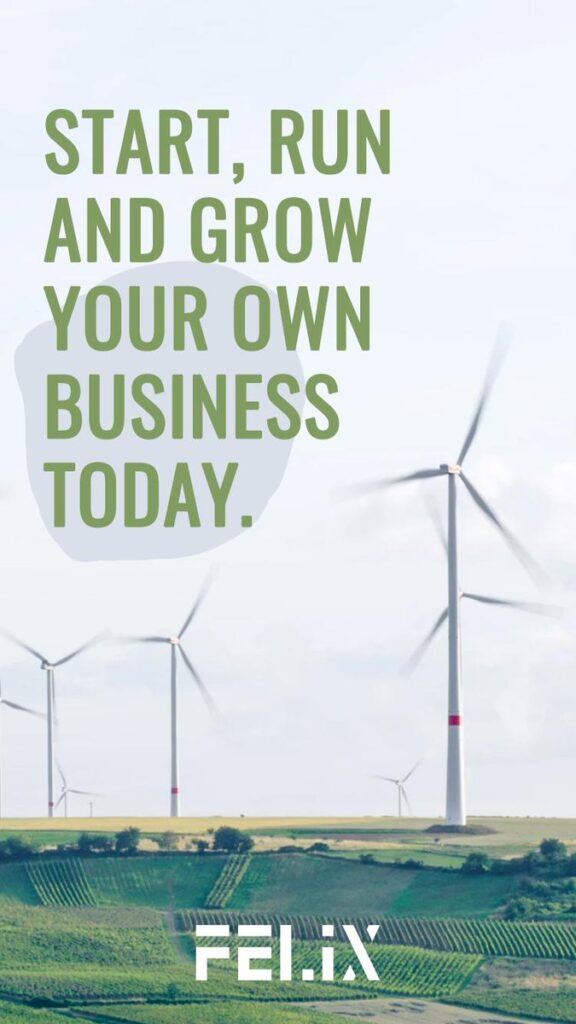Harness cutting-edge turbine designs to enhance efficiency, leveraging advancements like vertical-axis turbines and bladeless technology to capture wind power in diverse environments. Integrate smart grid solutions to improve energy distribution and storage, ensuring seamless integration with existing power infrastructures and boosting reliability. Employ data analytics and machine learning to optimize maintenance schedules and predict equipment failures, reducing downtime and operational costs. Explore innovative materials like carbon fiber and recyclable composites that lower the environmental impact and increase the lifespan of wind energy installations.
Current Challenges in Wind Energy
Wind energy, a cornerstone of sustainable energy solutions, faces several challenges that require ongoing innovation to maximize its potential. One primary challenge is enhancing the efficiency of energy production. While modern turbines are designed to capture wind more effectively, their performance can still be hampered by factors such as wind variability and turbine placement. Research and development are focused on optimizing blade designs and developing smart systems that dynamically adapt to changing wind conditions to increase overall efficiency.
Cost is another significant hurdle. Although the cost of wind energy has decreased significantly over the years, issues like high initial capital investment and maintenance costs persist. The financial viability of wind farms is heavily influenced by location and scale, necessitating strategies to make the technology more accessible and affordable. Case studies from Denmark and Germany illustrate how government incentives and innovative financing models can drive down costs, but not every region has the economic or policy framework to replicate these successes.
Environmental impact is an area of growing concern, particularly the effects of wind farms on local wildlife and ecosystems. Birds and bats are notably susceptible to collisions with turbine blades, prompting the exploration of design modifications and habitat orientation strategies that minimize these interactions. Technological advancements, such as radar systems that detect and divert animals, offer promising solutions but require further implementation and scalability studies.
By addressing these challenges through innovation and collaboration, the wind energy sector can continue its trajectory towards becoming a more efficient, cost-effective, and environmentally responsible solution for our global energy needs. In doing so, it sustains the optimism surrounding renewable energy’s role in mitigating climate change and fostering sustainable development.
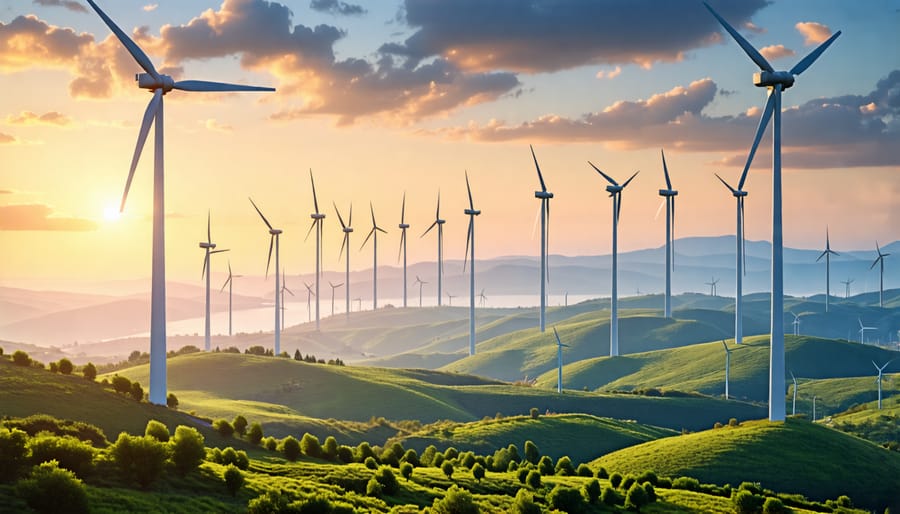
Innovative Technologies in Wind Turbines
High-Efficiency Turbine Designs
Innovative turbine designs are revolutionizing wind energy by enhancing efficiency and boosting output. One remarkable development is the twisted blade design. Inspired by the aerodynamics of birds’ wings, these blades improve airflow, reducing turbulence and maximizing energy capture even at low wind speeds. A compelling real-life example is the installation of these blades at an offshore wind farm in the North Sea, which reported a 30% increase in energy efficiency. Another advancement comes from the variable speed control technologies that adjust turbine speeds in real-time to optimize energy capture based on wind conditions.
An expert engineer from a leading renewable energy firm explains, “These innovations are critical in making wind energy more competitive with fossil fuels, especially in areas with inconsistent wind patterns.” Moreover, integrating smart sensors allows for predictive maintenance, significantly reducing downtime and operational costs. Together, these high-efficiency designs are pivotal in addressing global energy challenges and accelerating the shift towards a sustainable future.
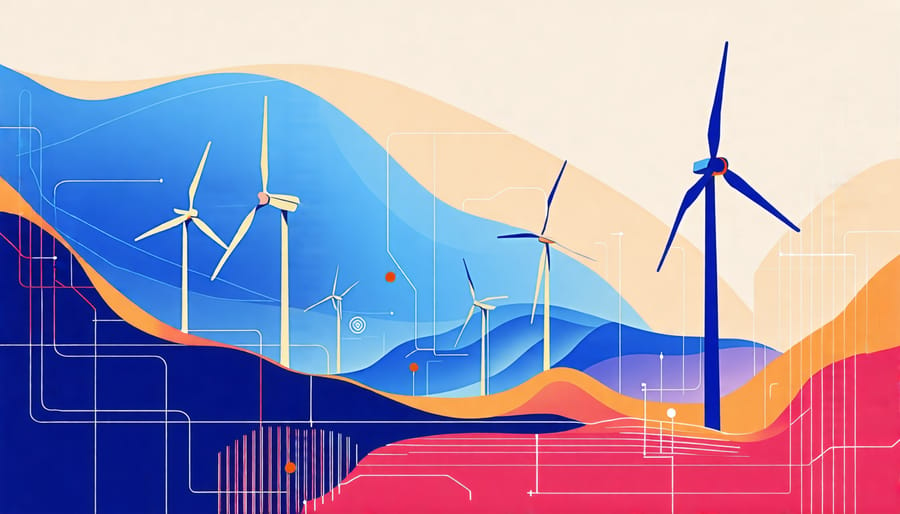
Smart Turbines
The integration of smart technologies into wind turbines is revolutionizing the industry, boosting efficiency, reliability, and performance. By embedding sensors and IoT (Internet of Things) connectivity, smart turbines can now collect and analyze vast amounts of data in real-time. This capability allows for predictive maintenance, where issues are identified and addressed before they escalate, minimizing downtime and extending the lifespan of turbines. For instance, a wind farm in Denmark has implemented such technology, resulting in a 15% increase in energy production over the past year. Furthermore, smart turbines can optimize their settings according to environmental conditions, such as wind speed and direction, to maximize energy capture. These advances not only enhance performance but also contribute to reducing the levelized cost of electricity from wind. As adoption grows, smart turbines are poised to play a critical role in the transition to a more sustainable energy future, providing an intelligent solution to meet rising global energy demands.
Advanced Materials and Manufacturing
In the field of wind energy, advanced materials and manufacturing processes are revolutionizing the landscape. One of the most significant innovations is the development of lighter, more durable materials for turbine blades, such as carbon fiber and advanced composites. These materials not only decrease the overall weight but also enhance performance, leading to greater efficiency in energy capture. Moreover, robotic and 3D printing technologies are gaining traction, streamlining the production process of intricate turbine components. As these processes evolve, the environmental impact of production decreases significantly, paving the way for sustainable growth. Exploring wind turbine recycling further highlights the sector’s commitment to sustainability.
Offshore Wind Energy Innovations
Floating Wind Farms
Floating wind farms are revolutionizing the renewable energy landscape by unlocking the vast potential of deep-water sites previously inaccessible to traditional offshore wind farms. Unlike their fixed-bottom counterparts, these innovative structures are anchored to the seabed with mooring lines, allowing turbines to harness stronger and more consistent winds found further offshore. This leap in design translates into higher energy yields and greater efficiency, meeting the growing demand for clean power.
One of the key benefits of floating wind technology is its minimal environmental footprint. By siting turbines farther from shore and in deeper waters, these farms avoid disrupting marine ecosystems and reduce visual impact for coastal communities. Additionally, their flexibility in location can help countries and regions with deep coastal waters to tap into wind power without extensive infrastructure changes.
A prime example of this innovation in action is the Hywind Scotland project, which became the world’s first full-scale commercial floating wind farm in 2017. It demonstrated the viability and promise of floating technology by powering thousands of homes with minimal environmental interference. With ongoing advancements, floating wind farms represent a significant step forward in our quest for sustainable energy solutions.
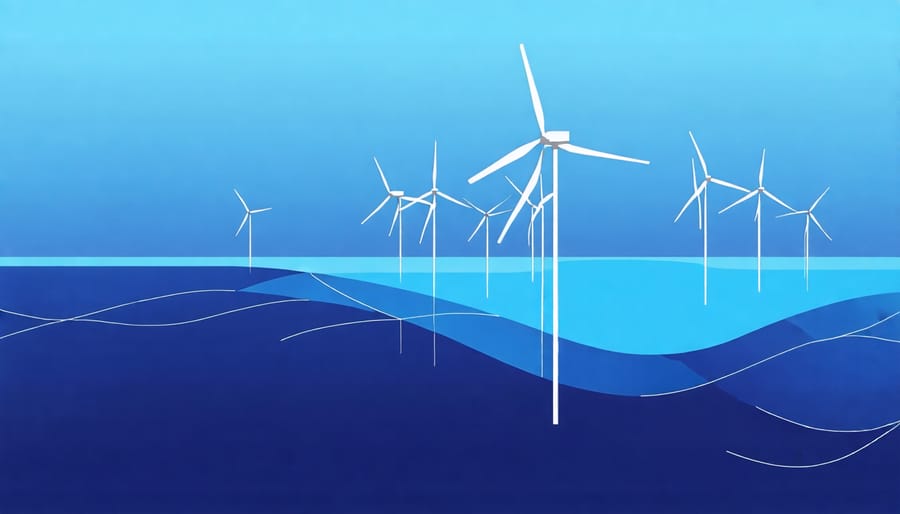
Environmental Impact Mitigations
Recent innovations in offshore wind energy are playing a crucial role in minimizing environmental impacts. One significant breakthrough is the development of floating wind turbines, which offer an environmentally-friendly alternative to fixed-bottom structures. These turbines can be anchored further from shore, reducing interference with marine ecosystems and viewsheds. For instance, the Hywind Scotland project has demonstrated the viability and ecological benefits of floating turbines, garnering positive feedback from environmental advocates.
Moreover, new materials and designs emphasize sustainability. Turbine blades crafted from recyclable materials are being tested to decrease the waste produced at the end of their lifespan. In a conversation with Dr. Sarah Johnson, a leading expert in renewable materials, she highlighted how bio-composites could revolutionize the industry by providing durable and sustainable options for wind components.
Underwater noise reduction technology is also being implemented to protect marine life during installation processes. Innovations such as bubble curtains and quieter piling methods mitigate the impact on sensitive species such as dolphins and whales. These advancements not only make offshore wind a more appealing option for energy production but also help foster a harmonious balance with the surrounding natural environment, paving the way for more sustainable energy solutions.
Integration with Other Renewable Energy Sources
Hybrid Energy Systems
Wind energy innovations are evolving through cutting-edge hybrid systems that merge the strengths of wind power with solar and storage technologies. These systems offer a seamless integration that optimizes energy generation and enhances reliability, addressing the intermittency challenges associated with standalone renewable sources. For instance, combining wind and solar allows for a more balanced energy supply, as wind often complements periods when solar output is low, such as during cloudy days or at night.
Storage technologies further amplify the benefits, storing excess energy generated during peak production and making it readily available during high demand or low generation periods. This ensures a more stable and consistent energy flow, making renewables a more viable option for both residential and commercial users. Real-life examples, like the integrated projects in regions like California and Australia, showcase significant increases in energy efficiency and reductions in carbon footprints, providing an optimistic view of the future where renewables play a crucial role in a sustainable energy landscape.
Grid Integration Enhancements
Advancements in grid integration are reshaping the potential of wind energy. By focusing on innovations that enhance the seamless inclusion of wind power into existing grids, unpredictable energy supplies can be stabilized, paving the way for a more sustainable future. One significant development is the use of advanced forecasting techniques and AI-driven algorithms to predict wind patterns with remarkable accuracy. This allows grid operators to better balance supply and demand, preventing energy overloads and shortages. Real-life case studies, such as those from Denmark, showcase how smart grid technologies are successfully harmonizing energy outputs, demonstrating resilience even with high wind penetration in the national grid.
Additionally, energy storage solutions, like large-scale batteries and pumped hydro storage, are becoming crucial companions for wind power, storing excess energy generated during peak winds for later use. This synergy not only enhances the reliability of wind energy but also enables grids to maintain stability and efficiency. With these technological strides, wind energy is being poised not just as an alternative, but as a cornerstone of modern energy systems, offering us a glimpse of a greener, smarter future.
Case Studies and Real-Life Examples
In recent years, the landscape of wind energy has been transformed by groundbreaking innovations, leading to successful implementations worldwide. One standout example is the Horns Rev 3 offshore wind farm in Denmark, which exemplifies efficient integration of wind power into national grids. With a generation capacity of 407 MW, it not only supplies clean energy to over 425,000 homes but also demonstrates the potential of offshore wind in reducing carbon emissions. This project showcases how advanced turbine technologies, combined with optimized operations, can maximize output and reliability.
Another compelling case is the development of floating wind farms, such as the Hywind Scotland project. Situated off the coast of Peterhead, this innovative farm consists of floating turbines anchored to the seabed, enabling deployment in deeper waters where traditional foundations are impractical. The Hywind project, capable of powering approximately 20,000 homes, highlights the expanded geographical reach of wind energy solutions facilitated by technological advances.
In the United States, the Wind Catcher Energy Connection project serves as a benchmark for large-scale onshore wind farms. Located in the Oklahoma Panhandle, it is one of the largest such projects in North America, boasting a capacity of 2,000 MW. This ambitious initiative not only provides substantial economic benefits by creating thousands of jobs but also emphasizes the role of interconnected systems in delivering clean energy over long distances.
These real-life examples of wind energy projects worldwide illustrate how innovative approaches can overcome geographical and technical challenges, paving the way for broader adoption of wind power. These successes inspire optimism and investment in sustainable technologies, painting a promising picture for the future of renewable energy.
Conclusion
Innovations in wind energy hold immense promise for a sustainable future. By surmounting today’s challenges, such as efficiency and storage, these advancements pave the way for a cleaner energy landscape. As cutting-edge turbines harness wind more effectively and integration with other renewables strengthens, the vision of a greener planet comes into sharp focus. Real-life examples and expert insights underline the potential these technologies harbor, inspiring policymakers and enthusiasts alike. Embracing these innovations not only aids in reducing our carbon footprint but also fosters energy independence, showcasing wind energy’s pivotal role in a sustainable tomorrow.

